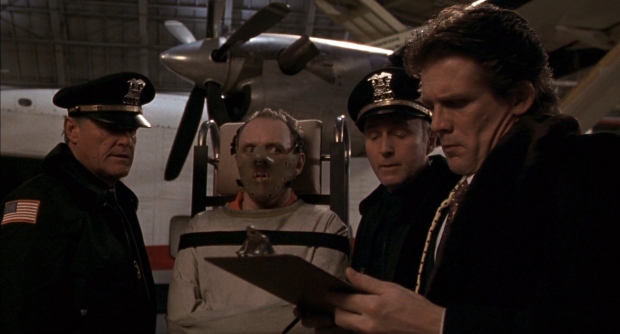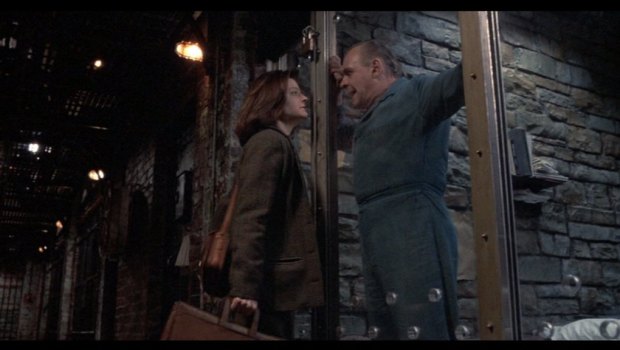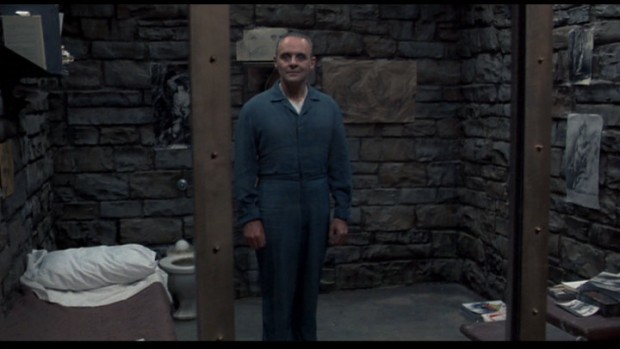These tips are not concrete in any fashion. They are merely suggestions based upon a closer look at various films and examining why they do or don’t work. So there’s no confusion, I include myself in the audience these tips are compiled for. Let’s see what today’s title has to offer us…
suggestions based upon a closer look at various films and examining why they do or don’t work. So there’s no confusion, I include myself in the audience these tips are compiled for. Let’s see what today’s title has to offer us…
I’ve owned this on DVD for a few years now, but it was just a regular DVD, and I decided to rent the library’s Special Edition. This was a two disc set, with the second one PACKED with bonus features. Also, it makes me really want to check out that TV show “Page to Screen” hosted by Peter Gallagher. There was an episode of it on the “Get Shorty” Special Edition as well, and I really enjoyed both episodes.
Anyway, what I gathered most from those bonus features were little touches that I’d missed on my earlier viewings. It’s with these in mind that I thought I’d dissect this chilling classic.
BEWARE: MAJOR SPOILERS AHEAD!!!
-
An At-Odds Hero. This was done intentionally in the film, and the makers discussed this at length. Jodie Foster is right around five feet tall, and the filmmakers wanted her to seem less capable to the audience. They did this by having as many actors tower over her, and look down on her. This can be a great effect for your hero, giving the viewer a great deal of satisfaction if and when your hero overcomes these extra adversities.
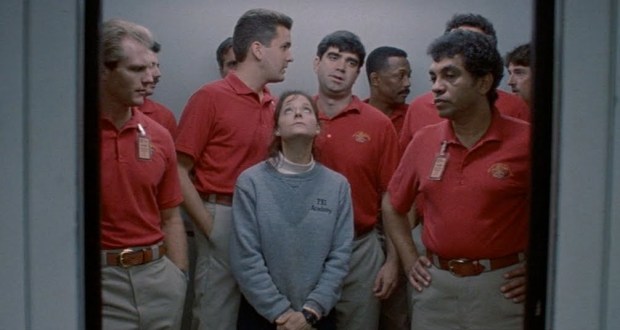
-
Discomfort. You’d be surprised just how much this can give off a great effect. When you see the FBI Headquarters in Quantico, the classrooms and offices look very cold and sterile. The best example is Jack Crawford’s office. It was small, with no windows, very cold, complete with an inescapable wall of serial killer victims on one wall. It’s equaled by Crawford’s cold demeanor towards Starling. Describing a room like this along with a conversation of this nature can make for a bone-chilling atmosphere.
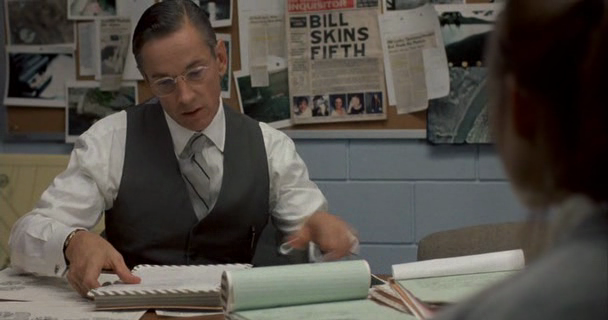
-
Active Cast of Characters. This was something I hadn’t noticed before, but damn near every character was working towards one thing or another. The only exceptions that come to mind are Starling’s friend at the academy and the orderly at the asylum. Even a side character like Dr. Chilton was after something. He wanted to crack Hannibal’s psyche. I’ll admit, I’d forgotten about how he screwed over the FBI’s investigation just for the credit.
-
Solid Scenes. This and the above tip go hand in hand. Because every character is active in the story, there are no unnecessary scenes. If there’s one that doesn’t advance the plot, it most definitely reveals character. I had initially thought of these as ones at Buffalo Bill’s lair, but then I realized two things: they were showing some form of motive (he wants his woman suit), and they show that the catalyst for this story (the Senator’s daughter) is still alive and she is eventually active towards the end (never seen a captive use a captor’s pet against them). This is a big reason the movie never felt slow. Every scene had a purpose, and therefor, there was nothing tedious about them.
-
Make It MORE Difficult. Starling has been ordered to get Hannibal to take some psychiatric evaluation tests and he doesn’t want to unless she tells him about herself. Exactly what her superior had said NOT to do. So now her obstacle in getting Lecter to take the test has just gotten bigger. Can she do her job with him inside her head? This happens several times in the film. She wants information on Buffalo Bill, but he wants to play his little mind games. She asks a question, he asks a question. All the while, a life is in danger. No one has time to play these games. Except Hannibal. All he’s got is time.
The game of question asking has been used since, most notably in “The Sixth Sense” in Malcolm’s initial meeting with Cole. The main difference being that they weren’t really pressed for time.
-
Memorable Villain. You knew this was coming. Hannibal Lecter is a fantastic villain, but what exactly makes him that way? Starting with the fact that he’s talked about up until the minute we meet him, we expect a disfigured monster or something, but we are met with a prim and proper gentleman-type. Even so, the great thing about his reveal is him standing in the middle of his cell, standing straight as an arrow.
The big tip here is to always have your villain be the opposite of what people expect. You can write up a description of yours, and have people describe what he or she may look like, then take that information and make a polar opposite of that. The polite serial killer is always more interesting than the constantly screaming one.
-
Villain Speak. A while back, I was discussing how Mr. Blonde never raised his voice, and how doing so made him even more effective as a bad guy. Hannibal only raised his voice once as I recall, but it was just him calling after Starling once she’d left, so that’s a moot point.
A great thing Hannibal does is after a few minutes of speaking with Starling, mimics her accent and uses it to insult her person. She has no choice but to take it, since this is her first big assignment.
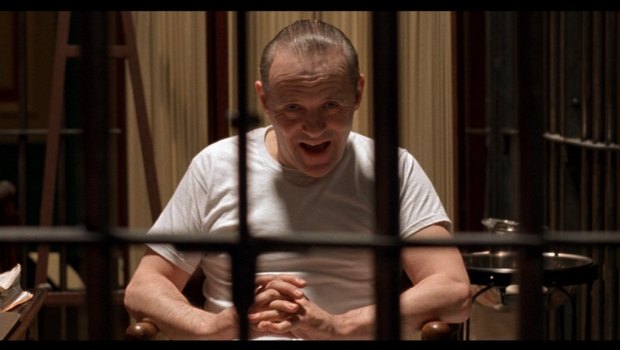
Any time you can make a character HAVE to be in a position they’re not going to like, always heap the discomfort on them in droves. There’s a danger to doing this excess, though, “Monk” being the obvious example of this. Why this works is that Hannibal uses it as a means to get into Starling’s head. It wasn’t meant to be humorous, but off-putting. That’s why he only did it the first time, and not constantly. (At least not as thick as he did the first time) -
Suspense Via Crosscutting. Admittedly, this was done in post, but this should still be strived for in the scripting stage. The example from the film where the action cuts between Buffalo Bill in his basement, being alerted to someone outside and the FBI getting ready to raid a house. The crosscutting was greatly effective, building tension up for a conclusion to the already tension-filled story. Even during my latest viewing, I was still sucked into believing that they were actually going to capture Bill.
-
Don’t Go In There. This is what’s referred to as Dramatic Irony. The audience knows about the danger lurking behind a door, but the hero is oblivious to it. We scream at the screen: “Don’t Go In There!” This was how the audience felt when Starling went into Buffalo Bill’s house. She just thought he was a random neighbor of a victim, but we knew differently.
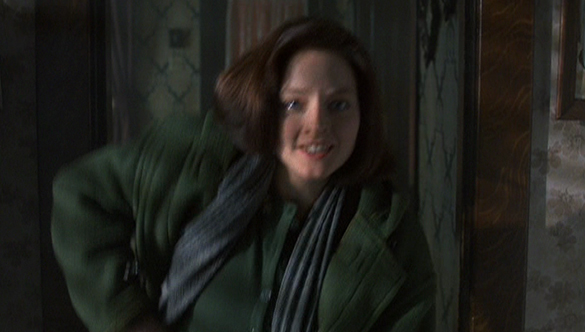
Now, Dramatic Irony doesn’t need to be thought of as JUST this kind of scenario. Alfred Hitchcock famously illustrated the use of suspense in thrillers as: “There’s two people having breakfast and there’s a bomb under the table. If it explodes, that’s a surprise. But if it doesn’t…”A related idea might be a kid who has snuck a puppy home. His parents have said he can’t have one, but he’s disregarded them. Now he has the puppy in his room, but he hears his mom coming down the hall, so he hides the puppy in the closet. Now, when his mom comes in, there’s nothing but tension, because any sound the puppy emits gives it away, so the kid is going to try and get his mom out as fast as possible without letting her pick up on something being off about his behavior.
-
Stakes. An extension of the above point. Dramatic Irony is only as good as the stakes of the situation at hand. In the film, if Starling realizes the guy she’s talking to is Buffalo Bill, she can arrest him and he can’t kill anymore. But if she doesn’t, not only does he kill his captive below, but his killing spree can continue.
Those are pretty high stakes, plus, we’ve spent the last ninety minutes getting acquainted with these characters, so the outcome of the encounter has a huge impact one way or another.
Now in the example with the puppy, the stakes aren’t necessarily that high. That is to say, the fate of the family doesn’t hang in the balance. This is a scenario found mostly in family films, but nonetheless, there are still stakes. If the puppy is quiet and not uncovered by the mom, the kid gets to enjoy the puppy a little while longer at least. If the mom finds the puppy, she could very well take it away, and the kid would be sad.
What I Gained: If a scene feels tedious, double check to make sure that it is contributes towards the plot. Make sure most of, if not all your characters are after a goal of some sort, and aren’t just sitting around, waiting for things to happen.
Until next time, Movie Buffs!
Script Link: SILENCE OF THE LAMBS, THE by Ted Tally (1990.01.15)
